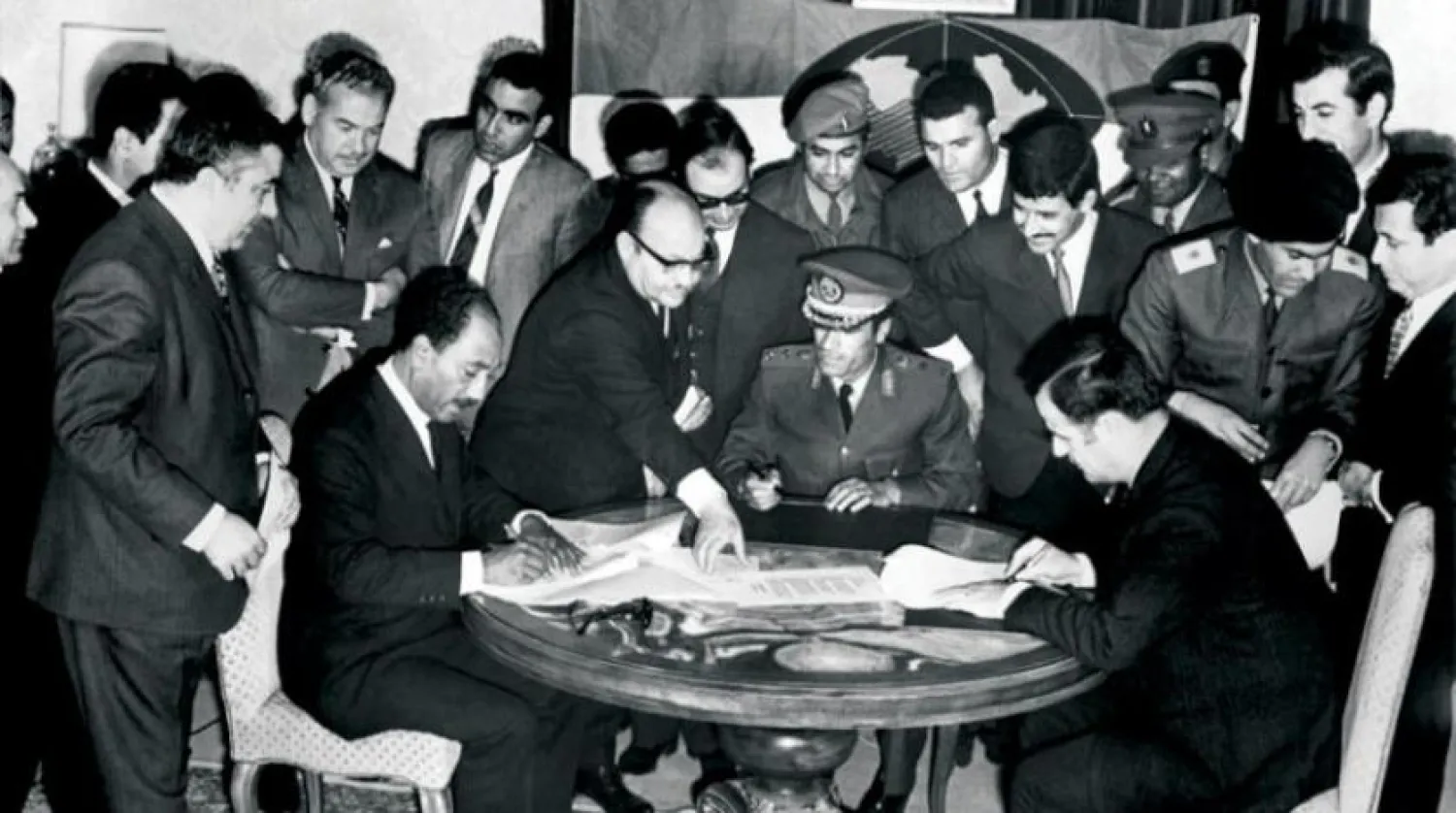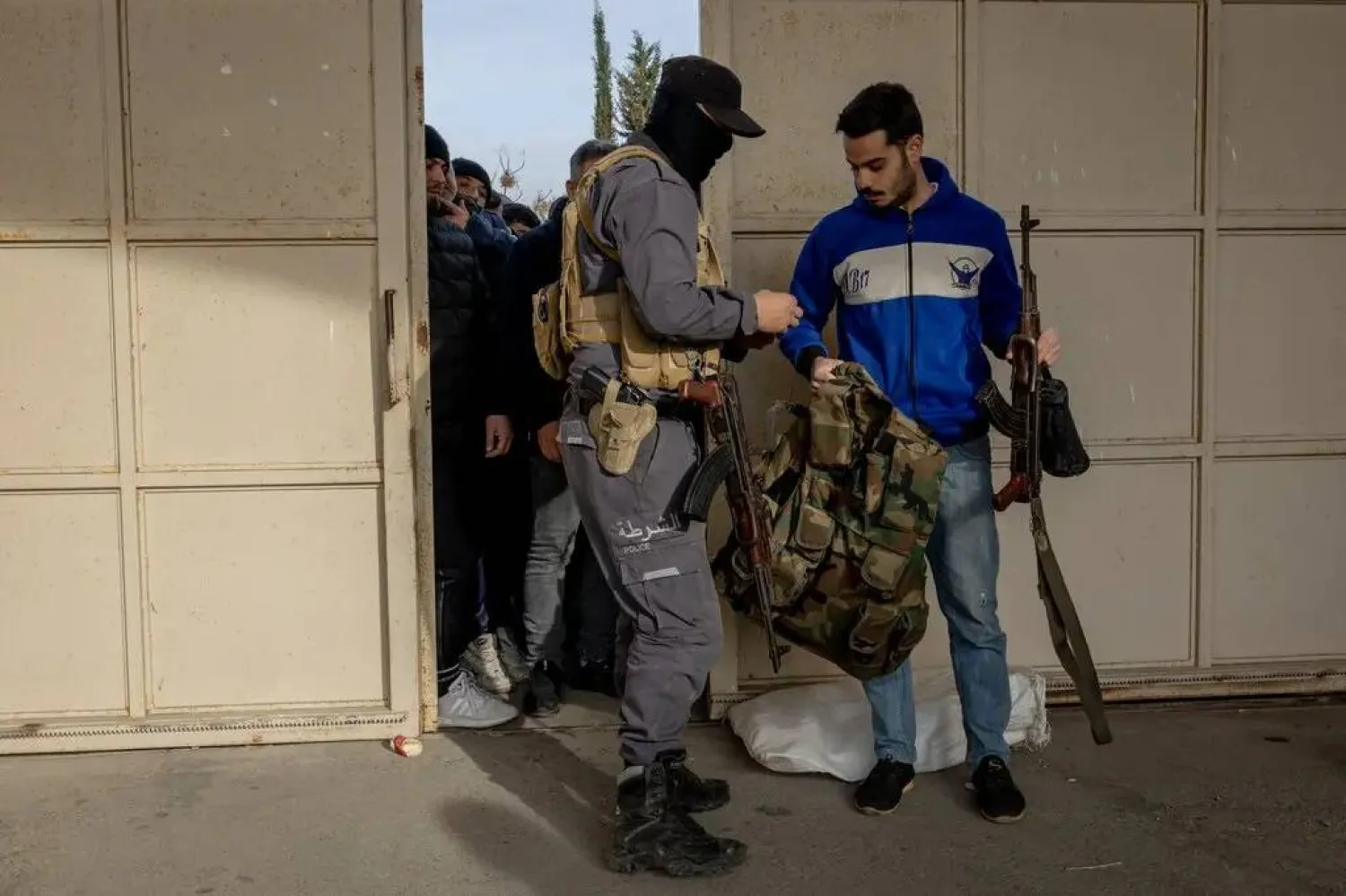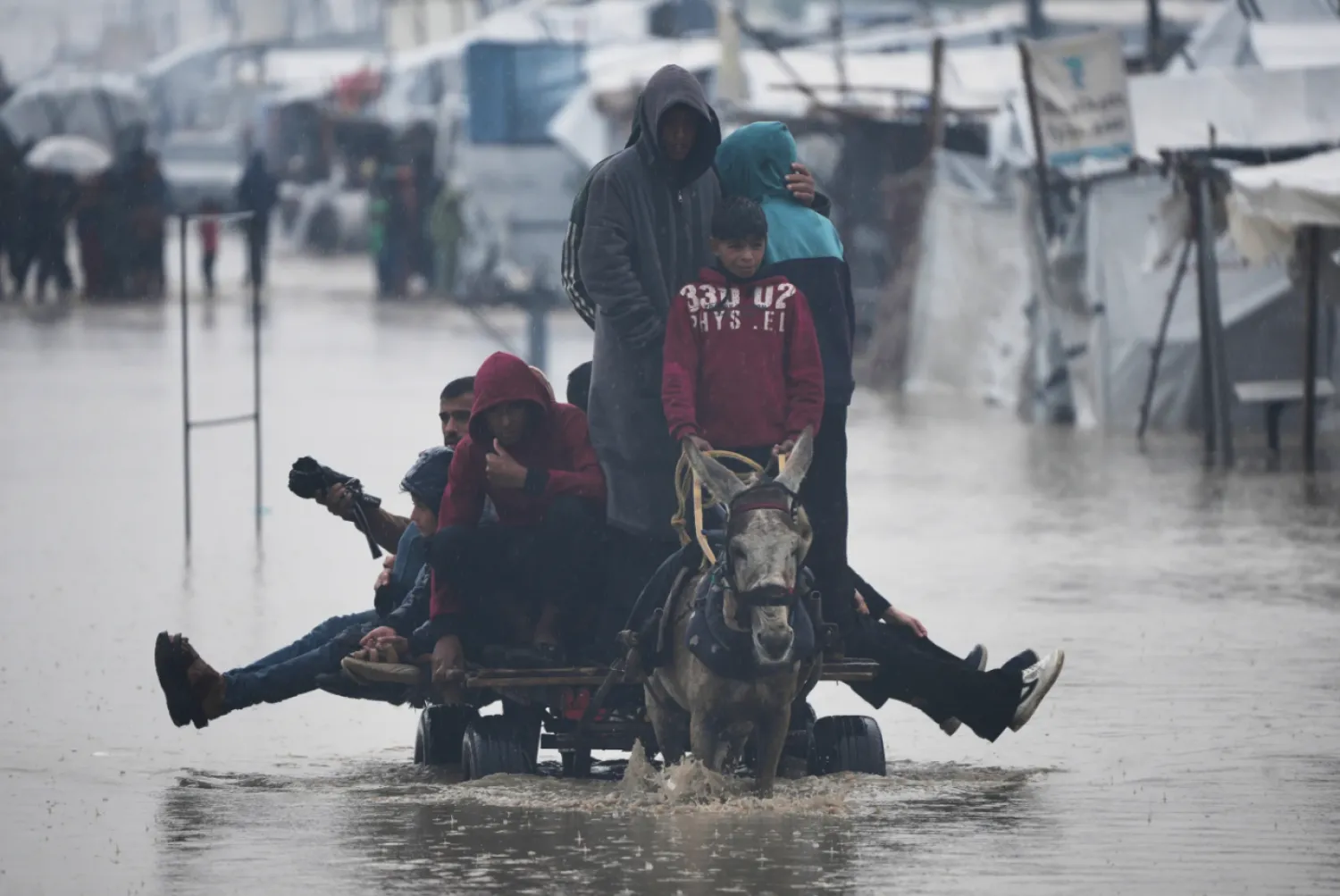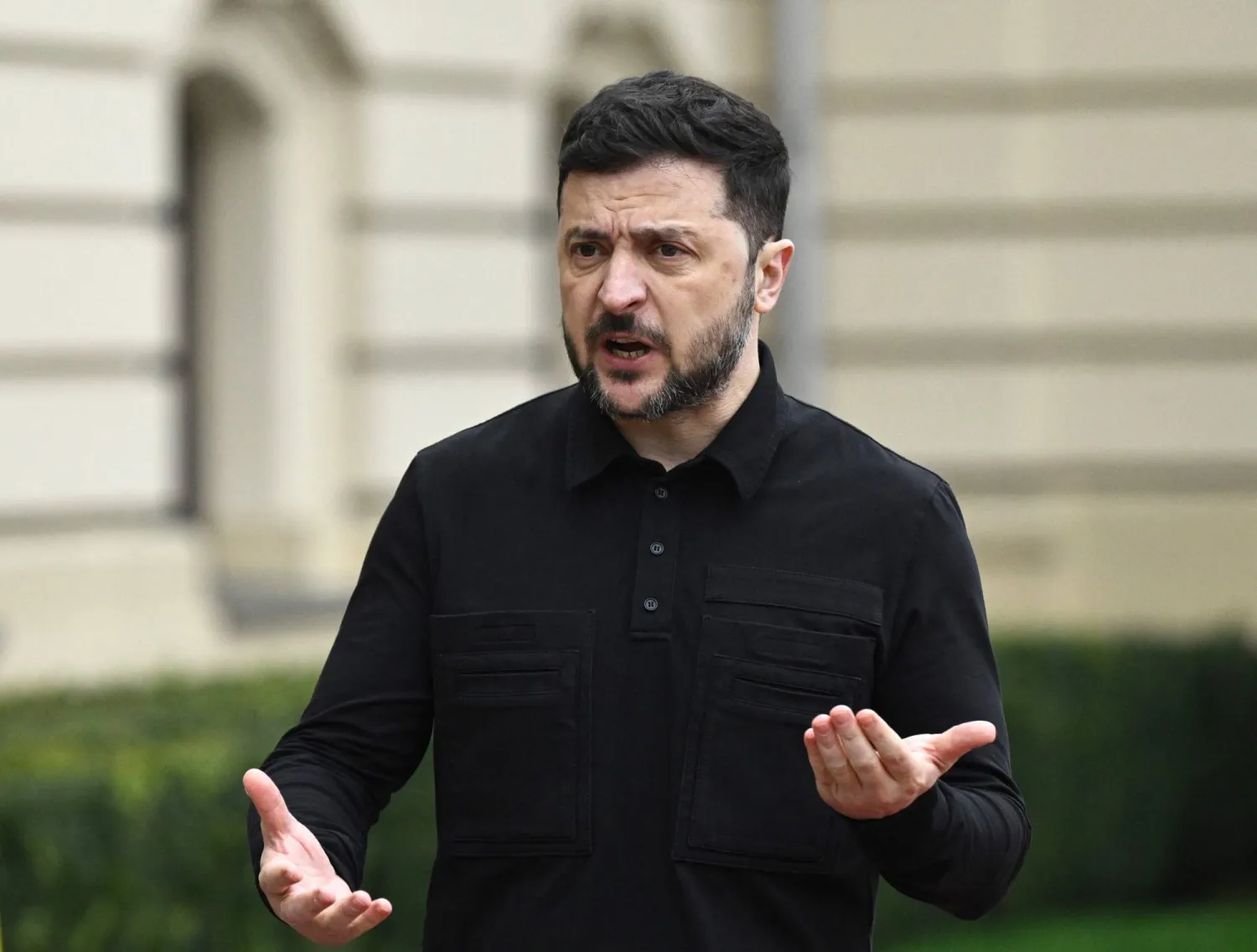In this third and last episode of excerpts from a book by Libyan author Mojahed Bosify about Libya under the rule of late leader Colonel Moammar al-Gaddafi, Asharq Al-Awsat focuses on the period that followed Al-Fateh Revolution and how the colonel was able to lead the scene, overstepping his fellow officers, who participated in overthrowing the rule of King Idris As-Senussi.
This episode also tackles Gaddafi’s campaign to expel the British and American troops stationed in Libya, and then banish the Italian community there.
“Dawlat al-Khayma” (The Tent State) is published by Beirut’s Difaf Publications and will be released at the Cairo Book Fair.
The book recounts that as soon as the Revolutionary Command Council was formed, a fundamental practical problem emerged. The council had no plans beyond the coup, nor a project or a vision to implement.
The revolutionaries launched their coup mainly for an external goal, which was to support the national war effort led by Egyptian Leader Gamal Abdel Nasser, and to contribute to the expected battle that would reclaim the occupied lands.
Apart from general slogans about corruption and oppression, the internal Libyan project was not foreseeable from the beginning, and there were no plans for the next day.
Those months of enthusiasm, which began with the announcement of the revolution on the morning of Sept. 1, 1969, were a romantic period, which saw local and Arab feelings intertwine, as Abdel Nasser’s ideas were a local affair in every country.
As weeks passed, Fathi al-Deeb, Abdel Nasser’s special envoy to Libya, his men, and the existing Libyan cadres, were able to run the revolutionary state and carry out the required services.
There was no real need for a council of revolutionary officers in the absence of practical tasks for them after the return of calm to the country. But they were spending their time, however, in open marathon meetings, fighting for opportunities to speak and to grab ministries, and to ensure that they have equal chances.
There were no disagreements over visions or ideas, as the officers did not have any clear project. Gaddafi was indeed the leader, but they were somehow equal in volume because most of them were from a similar environment.
However, competition and personal quarrels produced a kind of chaos and uncomfortable rivalry. It was a period of hysterical enthusiasm, during which the meetings of the Revolutionary Officers Council, often held at the radio headquarters, witnessed stampedes and objections.
Despite the general atmosphere of solidarity among the members, things sometimes went out of control. In one of those meetings, the agitated crowds forced Gaddafi to threaten his comrades with his machine gun. Thus, the council’s reliance on Fathi al-Deeb was much needed.
Abdel Nasser’s man and his team contributed effectively in almost every aspect of life, from maintaining the flow of supplies to finding new supporters for the revolution and also helping rebuild the army and establish the intelligence apparatus.
In parallel, Gaddafi’s performance was also developing at a rapid pace. While the events of the revolution shook all his fellow young officers, he remained calm, good at listening, and keen to stay away from the media, as much as he could.
He quickly caught Deeb’s attention. Less than two days after his arrival to Benghazi, the Egyptian man wrote to his leader in Cairo, describing Gaddafi as a balanced, solid, and religious man, who has some ambiguity, enjoys the respect of his colleagues, is aware of the world’s developments, and tends to move away from the spotlight.
The colonel managed his exposure with an innate talent. While everyone wanted to know who was behind the coup, he took careful steps, instinctively nourishing the curiosity of the press that was active around him. Thus, he managed to gain sweeping popular support at the lowest possible cost. When a picture or footage of him was leaked to the public, people felt happy and joyful, because God gave them a young leader, who loved Abdel Nasser and ate “Bazin” (a traditional Libyan dish) with his hands while he was lying on the ground.
Soon the process of securing the revolution and its leader began to take shape. After a vague announcement of two or three failed attempts to overthrow the council, the real problem facing the colonel came from his circle, mainly from his comrades’ mismanagement and chaotic behavior.
Shortly after the revolution, the colonel felt that the Revolutionary Command Council could no longer follow up the changes. He realized that his colleagues did not have a mature revolutionary vision and their limited administrative capabilities did not help them to complete the tasks assigned to them.
After Abdel Nasser’s death, Gaddafi’s concerns increased and he was obsessed with finding a solution. He knew that he had to take a set of measures to strengthen the internal front and prepare the country for the next phase. The Libyan colonel made two major moves within only months of the launch of his revolution, which increased his popularity.
The first move was the expulsion of the British and US bases in Libya in June 1970, and the second was the removal of the Italian community from the country three months later.
Although the first step was agreed upon between the king’s government and the two states several years before and its implementation dates were previously scheduled, its timing came in favor of the new regime and its leader. Likewise, the removal of the “Italian settlers” in October 1970 was celebrated every year as an achievement by the revolution.
A local socio-economic problem quickly ended with the expulsion of the “Italian community”, many of whose members had become true Libyans long ago, in a rapid populist process that led to the forced evacuation of a prominent cultural, social and ethnic segment of Libya.
The door was wide open to a cultural and ethnic drift in the country, as another Libyan component would be suppressed when the Libyan Amazighs had to act like Arabs. In a television appearance, the colonel presented proofs about the community’s authentic Arab affiliation, after a lengthy historical narration, in which he emphasized his knowledge and ability to deduce historical laws capable of correcting the error.
Thus, the Amazighs were forbidden to speak or write in their native language, under penalty of law, for about forty years.
Consequently, Libya lost, under completely illusory slogans, an important branch of its tree, which included a whole life, language, culture, and customs that quickly disappeared from the Libyan social dictionary.
Gaddafi went on with his plans, under the pretext of “the abolishment of fascism” - a message which was received with great popular support, although many segments of Libyan society descended from remains of the previous occupation of this land.









